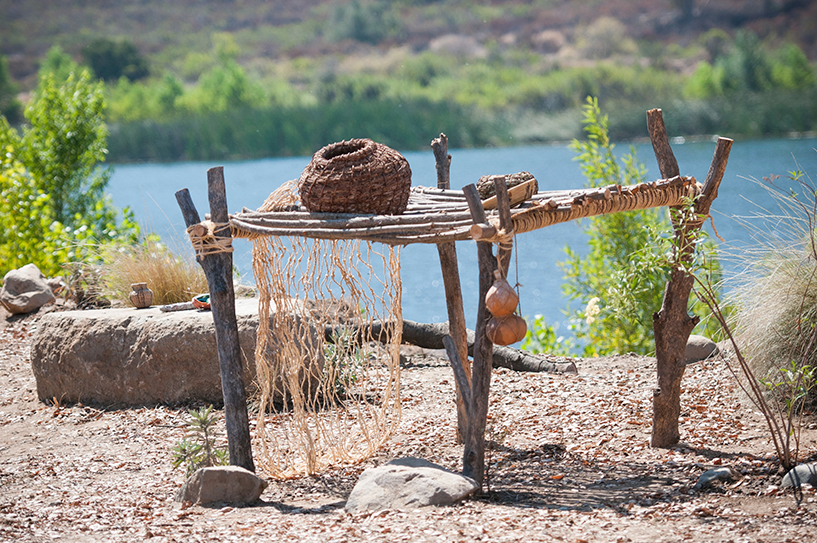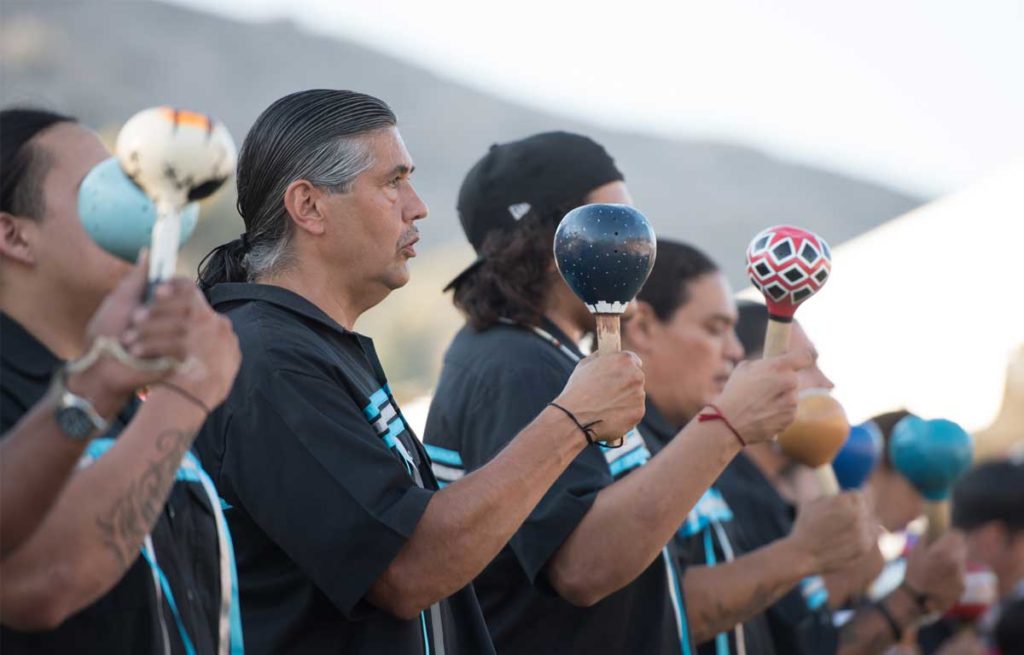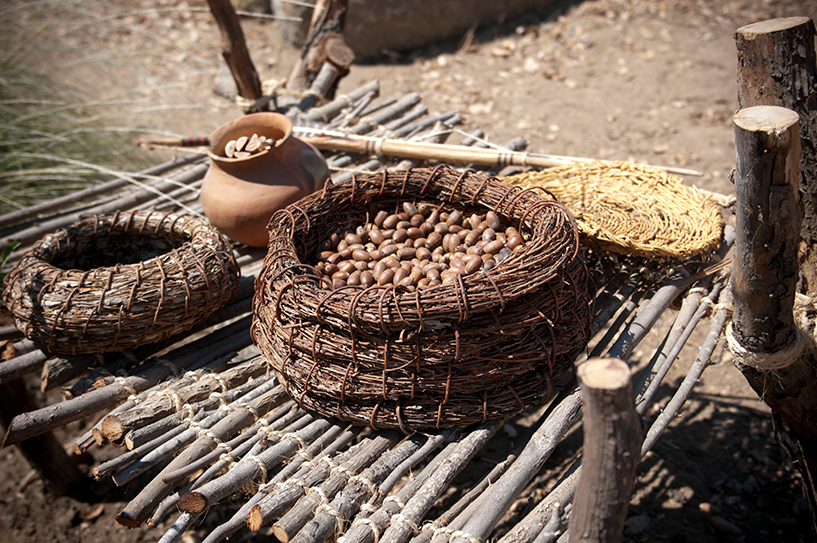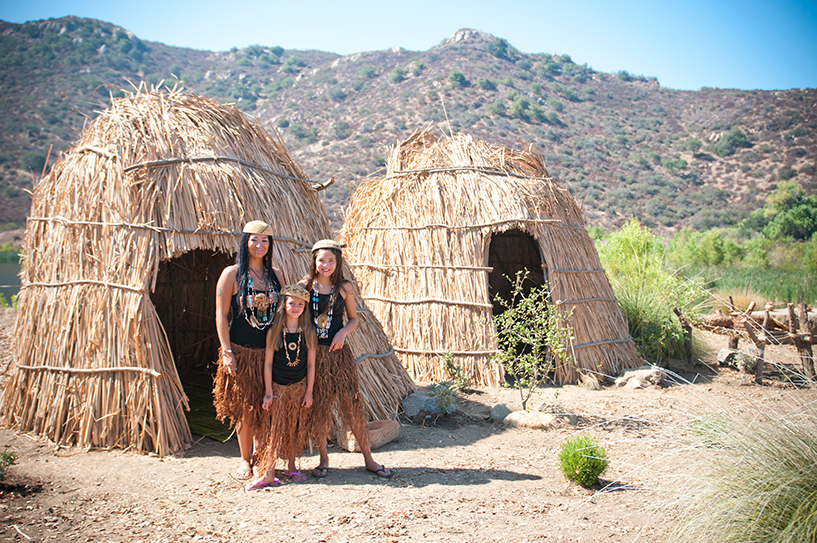Culture has been defined in one sense as "the entire way of life of a people."
Although culture is much more comprehensive than that, culture and tradition for the Kumeyaay Nation can be accurately thought of as the totality of the existence of the Kumeyaay people at this time, and existence that they traced back to their Origin Story (“how we came to be”), and to a place in the past that is beyond any contemporary understanding of time.
The Kumeyaay Nation’s Origin Story provides the Kumeyaay people with knowledge, wisdom, and a philosophy that explains how to treat one another and all other life forms, plants, animals, land, and water, in a manner that will maintain life for the Kumeyaay People generation after generation, in perpetuity.

As with any distinct and nation and people on Mother Earth, language, song, storytelling, oral history, and even games, repeated over and over from the Elders to the youth is the way in which the Kumeyaay People hold together and maintain their culture and traditions. Particular importance is accorded to those Kumeyaay who have passed on from this life and are making their way to the spirit world of the ancestors.
Songs and prayers from dusk to dawn, by singers who have dedicated themselves to maintain their Kumeyaay tradition of Bird Songs, are provided for a loved one who has embarked on their journey back to Creation. As is true for any original or Indigenous nation of this continent, water is of particular importance for the Kumeyaay Nation; even the word for the Creator is “Mai Ha” (“Waters Above”).
As with any distinct and nation and people on Mother Earth, language, song, storytelling, oral history, and even games, repeated over and over from the Elders to the youth is the way in which the Kumeyaay People hold together and maintain their culture and traditions. Particular importance is accorded to those Kumeyaay who have passed on from this life and are making their way to the spirit world of the ancestors. Songs and prayers from dusk to dawn, by singers who have dedicated themselves to maintain their Kumeyaay tradition of Bird Songs, are provided for a loved one who has embarked on their journey back to Creation. As is true for any original or Indigenous nation of this continent, water is of particular importance for the Kumeyaay Nation; even the word for the Creator is “Mai Ha” (“Waters Above”).

In her article “Kumeyaay Plant Husbandry: Fire, Water, and Erosion Management Systems,” Dr. Florence Shipek discusses information she received from interviews with Kumeyaay elders. She conducted those interviews between 1959 and 1965, “primarily from Kumeyaay elders and plant specialists between 80 and 110 years of age, who had avoided the European invasion as much as possible by remaining in the Alta California mountains or fleeing to the northern Baja California Kumeyaay mountain villages.” As Dr. Shipeck explains:
Around the edges of valleys, and on low slopes (particularly where a side drainage entered the main valley), oak trees were planted. Generally the grain fields under the oaks were slightly slower in ripening than in the open fields. Here controlled burns occurred after the fall acorn harvest.

On steeper slopes, the Kumeyaay planted chaparral shrubs that produced useful foods or medicines (e.g., ceanothus, manzanita, yucca, and opuntia). In addition, they also broadcast some grain seeds and other annual and perennial seeds immediately after a controlled burn. Although the chaparral shrubs immediately began resprouting from the roots, they remained small for several years. During the first year after a burn, the grain was abundant and was accompanied by annual plants that provided leafy greens.
Dr. Shipek provides a detailed understanding of the Kumeyaay cultural and knowledge traditions with the following:
Kumeyaay plant specialists experimented with all plants, testing them for subsistence, medicinal, or technical purposes, and trying seeds, vegetative cuttings, or transplants in every location. Whenever a plant was useful or successful, its numbers were increased. This specifically applied to emergency food plants, which sprouted only in the unusually timed rainfalls of drought years. Some might sprout only once in twenty years and produce vegetable and seed foods where the regular staples were reduced by drought.

The “entire way of life” of the Kumeyaay people traditionally was quite different prior to the Spanish, Mexican, and American invasions of the Kumeyaay Nation territory. Nonetheless, despite generations of devastating hardships, one cultural characteristic of that the Kumeyaay people have steadfastly maintained is resilience. When stated in terms of Western time, the Kumeyaay Nation and the Kumeyaay people continue today as one of the oldest nations on earth, having been existing now in their traditional territory for at least 12,000 years (and quite possibly more than 30,000 years based on the theory of linguistic diversification and other factors). Today, living in today’s contemporary times, they maintain their language, culture, and spiritual tradition for their future generations.